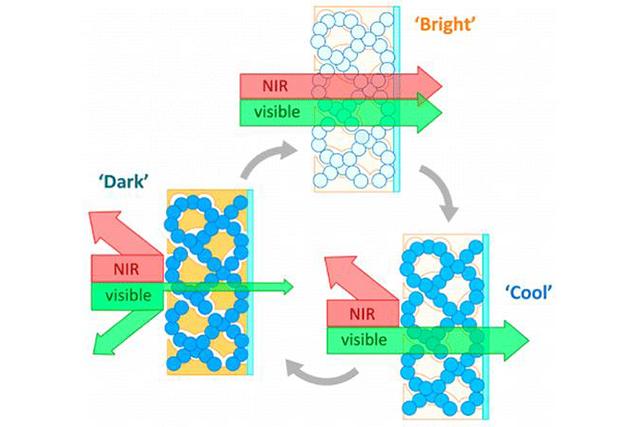This article was published in Scientific American’s former blog network and reflects the views of the author, not necessarily those of Scientific American
It's a hot summer day and you want to block the heat coming into your home through the windows. But lowering your blinds means less light, so you will be forced to turn on a lamp.
What if you could block the heat without blocking the sunlight?
Researchers have developed a material that can do just that. And, for those living in colder environments, this material can also switch modes to block the sunlight (and the glare it sometimes comes with) while still letting in the heat. By using this material in "smart windows", you could reduce home energy use by taking full advantage of both the heat and the visible light provided by the sun each day.
On supporting science journalism
If you're enjoying this article, consider supporting our award-winning journalism by subscribing. By purchasing a subscription you are helping to ensure the future of impactful stories about the discoveries and ideas shaping our world today.
The material is a type of dual-band electrochromic material. "Dual-band" refers to the two types of nanocrystals contained within the material itself. In this case, the first nanocrystal allows you to block visible light while the second targets heat-producing infrared light. "Electrochromic" means that you can flip between light- and heat-blocking modes using a jolt of electricity.

This material was first described by researchers, including University of Texas Chemical Engineering Professor Delia Milliron, in an article in Nature in 2013. This month, Milliron and her team published a new article in the Journal of the American Chemical Society, which explores how an advanced version of this material could be built into a film for use on windows.
According to this paper, a window coating containing a single component — doped titania nanocrystals - can selectively block visible light or infrared radiation. It can also switch from heat- to light-blocking mode using a weak jolt of electricity in a matter of minutes (previous versions of the material could take hours to switch). All told, this material can block up to 80% of visible light or 90% of near-infrared light.
According to Milliron, these “advancements show that sophisticated dynamic control of sunlight is possible.” Furthermore, Milliron and her colleagues “believe [that their] deliberately crafted nanocrystal-based materials could meet the performance and cost targets needed to progress toward commercialization of smart windows.”